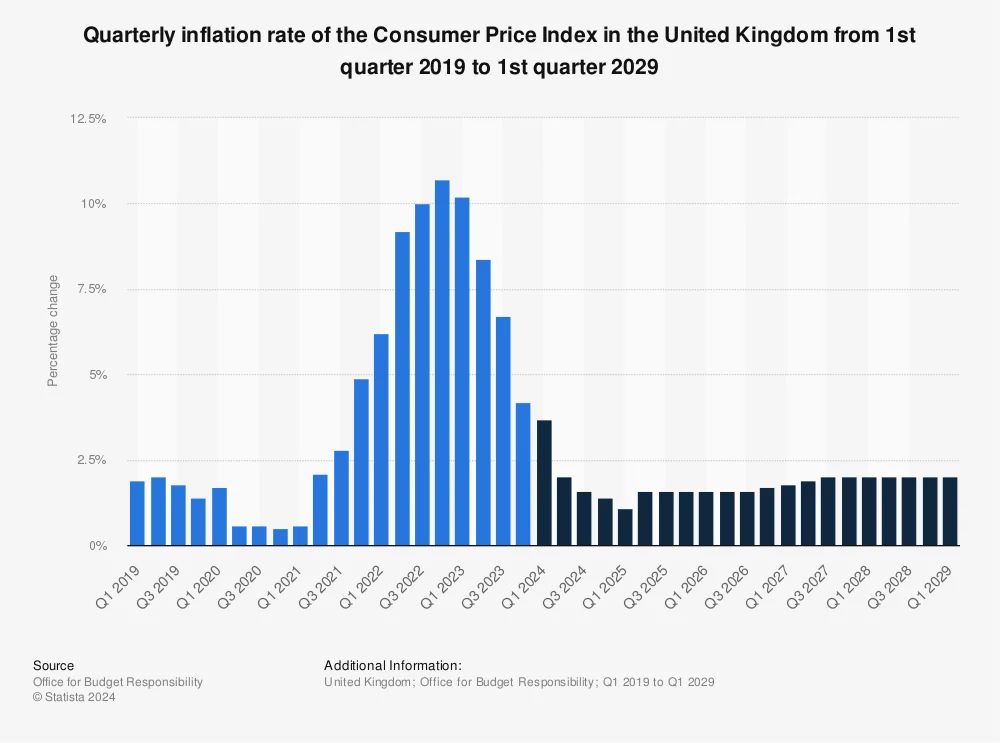The Consumer Price Index (CPI) is a widely used measure of inflation that tracks the changes in the prices of a fixed basket of goods and services over time. It is an important economic indicator that helps policymakers, businesses, and consumers understand the purchasing power of the currency and the overall cost of living. The CPI is calculated by taking price changes for each item in the predetermined basket and averaging them, with each item weighted according to its importance in the average consumer’s spending habits. This index provides valuable insight into the overall price movements in the economy and is used to make adjustments to wages, contracts, and government benefits.
When considering the CPI, it is important to understand that it reflects the average change in prices over time for a specific set of goods and services. It does not account for individual spending habits or regional variations in prices, so it may not accurately represent the inflation experienced by every consumer. Additionally, the CPI is often criticized for not including changes in the quality of goods and services, which can impact the true cost of living. Despite these limitations, the CPI remains a key tool for understanding inflation and making informed economic decisions.
What is CPI?
The Consumer Price Index (CPI) is a measure that examines the weighted average of prices of a basket of consumer goods and services, such as transportation, food, and medical care. It is calculated by taking price changes for each item in the predetermined basket of goods and averaging them. The CPI is one of the most widely used measures of inflation and is an essential economic indicator for policymakers, businesses, and households.
How is CPI Calculated?
To calculate the CPI, a base period is selected and the prices of the items in the basket are recorded. Then, in subsequent periods, the prices of the same items are recorded and compared to the prices in the base period. The percentage change in prices for each item is calculated and then averaged to obtain the overall CPI. The CPI is often seasonally adjusted to account for fluctuations in prices due to seasonal factors.
Uses of CPI
CPI is used for a variety of purposes, including adjusting income and Social Security payments for changes in the cost of living, determining cost-of-living increases for labor contracts, and as a deflator for other economic indicators. Additionally, the CPI is used by businesses to make pricing and investment decisions, and by policymakers to make decisions related to monetary and fiscal policy.
Types of CPI
There are different types of CPI that are calculated for specific purposes. These include the CPI-U, which represents the spending habits of urban consumers, the CPI-W, which represents the spending habits of urban wage earners and clerical workers, and the Core CPI, which excludes volatile food and energy prices to provide a more stable measure of inflation.
Challenges of CPI
While the CPI is a widely used measure of inflation, it has been subject to criticism and challenges. One challenge is the difficulty of accurately capturing changes in quality and quantity of goods and services over time. Additionally, the CPI may not fully account for changes in consumer behavior, such as substitution effects when prices change.
International CPI
Many countries around the world calculate their own version of the CPI to measure inflation and cost of living. While the basic concept is similar, the specific items in the basket and the calculation methods may vary from country to country. International organizations also produce CPI measures for comparison across countries.
CPI and Monetary Policy
The CPI is closely monitored by central banks and policymakers to guide monetary policy decisions. A high CPI may prompt a central bank to raise interest rates to control inflation, while a low CPI may lead to lower interest rates to stimulate economic growth. Central banks often have an inflation target based on the CPI, and use it as a key indicator in setting monetary policy.
Future of CPI
As the economy and consumer behavior continue to evolve, the CPI is also likely to undergo changes and updates to better reflect the cost of living and inflation. Advances in data collection methods and technology may lead to improvements in the accuracy and timeliness of CPI calculations, ensuring that it remains a relevant and reliable economic indicator.
CPI
CPI stands for Consumer Price Index. It is a measure that examines the weighted average of prices of a basket of consumer goods and services, such as transportation, food, and medical care. It is calculated by taking price changes for each item in the predetermined basket of goods and averaging them. CPI is one of the most frequently used statistics for identifying periods of inflation or deflation.
| Country | 2019 CPI | 2020 CPI | 2021 CPI |
|---|---|---|---|
| USA | 255.657 | 258.811 | 263.014 |
| UK | 108.519 | 109.583 | 111.766 |
| China | 101.18 | 102.85 | 104.36 |
CONCLUSION
CPI is an important economic indicator that helps to measure inflation and deflation by tracking the changes in the prices of a basket of consumer goods and services over time. It is used by governments, businesses, and individuals to make economic decisions and understand the purchasing power of money.



